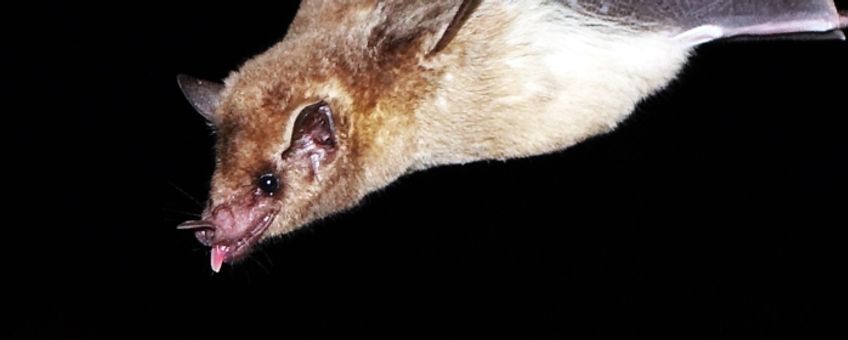
Bats protection needs caves protection on Bonaire
Dutch Caribbean Nature Alliance (DCNA), WILDCONSCIENCEThousands of years of dissolution and changing sea levels have left an intricate maze of fresh water and marine limestone karsts forming caves throughout Bonaire. There are estimated to be over 200 caves, although, many of these are difficult to access or submerged under water. There are several caves which can be accessed by the public, however, lack of management and supervision leaves these caves vulnerable to physical damage or being sites for illegal dumping of waste.
Park
Fortunately, the Bonaire Caves & Karst Nature Reserve Project is bringing attention to these issues and aiming for proper management of these critical ecological areas. This project proposed to create a nature reserve of nine different areas throughout the island. A 2-year pilot project, which started in the summer of 2018, created the 31-hectare Bonaire Cave & Karst Park in Barkadera. This project, funded by the Ministry of Agriculture, Nature and Food Quality, is a collaborative effort between WILDCONSCIENCE, Openbaar Lichaam Bonaire (Public Entity Bonaire) and The Caribbean Speleological Society (CARIBSS).

Sites for bat conservation
Recently, the most important areas and sites for bat conservation on Bonaire have been defined by a group of international experts. These areas are now listed as 'Important Areas / Sites for the Conservation of Bats' or AICOMs and SICOMs status. This distinction will be used as a tool to obtain local legislation aimed to the protection of these areas and the five species of local bats which play a critical role in the environment, mainly the two species of nectar-feeding bats, which serve as an important pollinator and seed disperser of local candle cacti. The other three species are important for insect control (particularly mosquitos).
Tourism
Caves are still available for public visits. However, new control and management of tourism within these areas will help reduce the impact of visitors as much as possible. This project hopes to give an upgraded and educational experience to visitors in a way which is controlled, safe, educative, non-damaging and non-disturbing. The Bonaire Caves & Karst Park of 31 hectares now includes 5 sinkholes and 13 caves (including 2 bat maternity caves). Over 4 kilometres of hiking trails were also created for the people to enjoy the authentic Bonairean dry forest. Education is one of the most important first steps, which is why CARIBSS conducted the 'I Bonaire Caves & Karst Tour Guide Course'. This certification trains guides to sustainably interact with the caves while conducting tours and to appropriately respond to emergency situations. Last month 13 local guides completed the course successfully.
Fences
In addition to increased educational awareness of the park, 1.7 kilometres of fencing has been put into place to keep exotic and invasive cattle (donkeys, goats, sheep and pigs) from overgrazing. This should give native plants the opportunity to recover and reforest the area. In addition, solid waste has been removed and large boulders have been put into place near the entrances of four caves outside the park to keep motor vehicles from entering to reduce the likelihood of additionally illegal dumping.

Bat life cycles
Also, the previously unknown life cycles of two species of insect-eating bats have been determined for Bonaire by this project. They found these species at a cave located in the Bakuna area, where scientific research was never conducted before. The yearly patterns of use were defined of this cave for the three different bat species that inhabit it. They conducted monthly captures at the cave entrance for twelve continuous months, using one harp trap and two 6-meter mist nets. Captured specimens provided basic but essential information: species ID, gender, age, their reproductive condition (sexually active males, pregnant females, lactating females, post-lactating females), weight, parasites load and overall health. Additionally, they collected faeces to look for microplastics and other contaminants. All individual bats captured were released after the data was collected. After twelve of these sessions, it was determined what species of bats are using this cave as a maternity chamber at what time of the year. This information is crucial to provide proper protection and management to these bat populations.
Sustainable
A sustainable future on Bonaire must include protection both above and below the surface. The caves and karst environments of Bonaire provide unique habitats and breeding grounds for a variety of critical species, not available in other areas. Proper management and increased education of the importance of these habitats will help ensure the protection of these fragile areas in the future.
More information
Text: Fernando Simal, WILDCONSCIENCE; DCNA
Photos: Roland and Renate Kraft (lead photo: southern long-nosed bat (Leptonycteris curasoae)); Henkjan Kievit, SHAPE/DCNA
